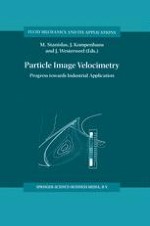
2000 | OriginalPaper | Chapter
Introduction
Authors : M. Stanislas, LML, J. Kompenhans, DLR
Published in: Particle Image Velocimetry
Publisher: Springer Netherlands
Included in: Professional Book Archive
Activate our intelligent search to find suitable subject content or patents.
Select sections of text to find matching patents with Artificial Intelligence. powered by
Select sections of text to find additional relevant content using AI-assisted search. powered by
Progress in science has often been the result of a breakthrough in experimental techniques which, by allowing the accumulation of new insight in the physics of phenomenon, has led scientists to propose new hypotheses and theories. As an example, the introduction of hot wire anemometry was a breakthrough in turbulence research more than 50 years ago. It was giving access for the first time to the spectral content of turbulence at one point in space and has allowed a lot of new insight and theoretical developments in this field. It is evident today that the recent introduction of Particle Image Velocimetry in Fluid Mechanics is such a breakthrough. PIV provides accurate quantitative information on the instantaneous spatial structure of the flow. It is a unique mean to capture vortices and coherent structures in unsteady (or apparently steady) regions of the flow where usual measurement techniques are unable to provide physically relevant information. By the extensive use of CCD recording devices, researchers are now able to obtain with PIV ensemble averages such as turbulent moments, spatial correlations and wave number spectra and this with good accuracy. All these quantities are of great interest for the understanding of the physics underlying complex flows. No doubt that this new technique will induce theoretical developments in the near future.